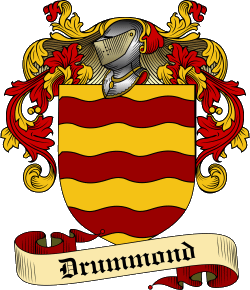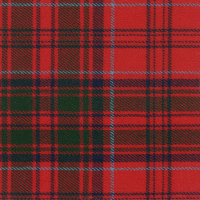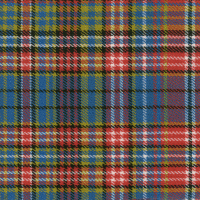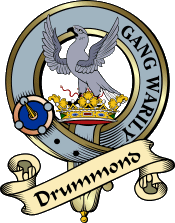|
|
Search

|
  Home Home
|
  Surname Surname
|
  First Name First Name
|
Popular Products

|
  Coat of Arms Coat of Arms
|
  Clan Badges Clan Badges
|
  Books & Gifts Books & Gifts
|
  Celtic Jewelry Celtic Jewelry
|
  Black Shirts Black Shirts
|
  CD Music CD Music
|
  Download Download
|
 Design Gallery
Design Gallery

|
  Irish Irish
|
  Flags Flags
|
  Celtic Celtic
|
  Tartans Tartans
|
  Scottish Scottish
|
  Claddagh Claddagh
|
  Surnames Surnames
|
  Highlander Highlander
|
  Celtic Radio Celtic Radio
|
Research

|
  History History
|
  Country Country
|
  Families Families
|
|
|
|
|
 Our store includes not only customized products, but select clothing items from brand name house hold names like Champion, Izod, WeatherProof, Adidas and more. For those in rural areas or that are home bound, we offer a separate clothing store containing thousands of items that can be purchased quickly with expedited service and shipping (hard to find larger sizes are available). We offer a wide selection of popular Celtic and Medieval books, Jewelry, Gifts, Accessories (such as caps and designer bags), Mouse Pads, Coat of Arms Plaques, Surname History PDF files, Bumper Stickers and Coat of Arms Downloads.
|
|
Our Heraldry Database has thousands of Family histories to search. Visit Now!
Fulton

Coat of Arms
This name is often spelt 'Fullerton' and the principal family of this name held the barony of Fullarton in Ayrshire. The name itself may be a derivative of ‘Fowler’, and relate to the keeping of birds, or may come from ‘Fuller’, meaning a ‘bleacher of cloth’. The family are said to be of Anglo-Saxon or Norman origin, and the first recorded instance of the name occurs towards the end of the thirtee.....
|
|
|
Heraldry Database: Drummond
Drummond

|
|


Surname: Drummond
Branch: Drummond
Origins: Scottish
More Info: Scotland
|
|
Background: The Drummonds were loyal to Scotland and her Kings. They served the House of Bruce and then later the House of Stuart. For over 500 years they served, and no better was an ally than a Drummond. The Drummond Chiefs held some of the highest offices in both the government and the military. The Drummond ladies were of such beauty that two were crowned Queen of Scotland. It is even rumored that there may have been a third. Drummonds have also been known for their temper. In Perth in the 17th century, there was a prayer, "From the ire of the Drummonds, Good Lord deliver us!"
According to legend, the Drummonds are descendent from Yorik de Marot. Yorik was the Royal Admiral to Hungary and a grandson of King Andrew of Hungary. It was he who took the perilous journey, in winter, to reach the Scottish shore at Stirling. It was he who delivered unto Malcolm Canmore, St. Margaret, the future queen of Scotland. This was in the early 11th century. The king was grateful and granted lands which were to become the ancestral homeland of the Drummonds. One source states that a Donald of Drymen fought in Malcolm Canmore's army against MacBeth in 1056, and that this was the reason for the grant of lands. It may be that Yorik married into the highlands clan and became its chief.
The earliest ancestor, of unbroken decent, is that of Malcolm Begg, or "Little Malcolm" of Drymen, who in 1225 was the Thane of Lennox. Malcolm received his name due to his stature. He was the Earl of Lennox's Seneschal. It was from this time, and the lands if Drymen, that the Clan Chiefs of Drummond are known as "An Drumanach Mor" - "The Great man of Drymen." It was Malcolm's son, Sir Malcolm, that took the name Drummond.
|
 Motto: Motto: Gang Warily, Go Carefully. Arms: Or, three bars wavy Gules. Crest: On a crest coronet Or, a goshawk, wings displayed Proper, armed and belled Or, jessed Gules. Supporters: (on a compartment semee of caltrops Proper) Two savages wreathed about the head and middle with oak-leaves all Proper, each carrying a baton Sable on his exterior shoulder. Badge: 1. A sleuth-hound passant Argent, collared and leashed Gules, (the leash shown reflexed over its back) 2. A caltrop Argent. Plant: Holly. View the Heraldry Dictionary for help.

One of the families residing on the edge of the Highlands, the Drummonds have always played a prominent part in Scottish affairs. The parish of Drymen lies to the west of Stirling and appears to have derived its name from the Gaelic, ‘dromainn’, meaning a ‘ridge’ or ‘high ground’. The traditional legend narrates that the first nobleman to settle at Drymen was Hungarian, having accompanied Edgar the Aetheling and his two sisters to Scotland in 1067 on their flight from William the Conqueror. The royal fugitives were warmly received by Malcolm III, who married one of the royal sisters, Margaret, later to be made a saint. The first chief appearing in written records was Malcolm Beg, Chamberlain of Lennox, who married Ada, the daughter of the Earl of Lennox and who died some time prior to 1260. Gilbert de Dromund of Dumbarton appears on the Ragman Roll of Scottish noblemen submitting to Edward I of England in 1296. Malcolm de Drummond also swore fealty to Edward at this time. Despite this, the Drummonds firmly supported the cause of Bruce and Scottish Independence, and after the Battle of Bannockburn the king bestowed upon them lands in Perthshire. It is supposed that the four-spiked pieces of iron called ‘caltrops’, which form part of the heraldic emblems of the Drummonds, allude to Sir Malcolm’s promotion of the use of these weapons, which were highly destructive of the English cavalry.
In 1357, Annabella Drummond married, John, High Steward of Scotland, later Robert III, and she exercised considerable influence over her husband. Sir John Drummond rose to great power during the reigns of James III and IV. He was created a peer with the title of ‘Lord Drummond’ in 1488, a title borne today by the present chief. In one famous incident he was confined in Blackness Castle for having struck the Lord Lyon, King of Arms, for allegedly slighting his grandson, the Red Earl of Angus, and was only released a year later. His son, David Drummond, also fell foul of royal justice after a feud with another family resulted in his violation of the right of sanctuary. He did not escape with imprisonment, and instead paid with his life.
Around this time the Drummonds built a new castle at Concraig, and named it Drummond Castle. It is now the Scottish seat of the Earls of Ancaster, whose family name is Drummond-Willoughby. James, the fourth Lord Drummond, was created Earl of Perth in 1605. The family were staunch supporters of the Stuart kings, both during their quarrels with Parliament and after the exile of James VII. The third Earl joined the Marquess of Montrose in August 1645 and was taken prisoner at Philiphaugh the following month. James, the fourth Earl, was appointed Lord High Chancellor of Scotland in June 1684. On the accession of James VII he openly declared himself a Catholic, and enjoyed high royal favour. He was one of the founder knights at the revival of the Order of the Thistle in 1687. When James abdicated, the Edinburgh mob plundered the earl’s town house and he himself became a prisoner for nearly four years in Stirling Castle. He was freed in 1693 and went to Rome. He was summoned to France by his king, who bestowed upon him the Order of the Garter and raised him to the rank of Duke of Perth. His brother, the Earl of Melfort, also one of the founder knights of the Order of the Thistle, was with the king during his campaign in Ireland in 1690. The brothers so impressed their French hosts that their duchesses were accorded the jealously guarded right to sit in the royal presence.
James Drummond, later the second Duke, was one of the first to join in the rising of 1715. He formed a daring plan to seize Edinburgh Castle and commanded Jacobite horse at the Battle of Sheriffmuir. He escaped to France and his estates were forfeited. The third Duke joined Bonnie Prince Charlie on his arrival at Perth in September 1745. He followed his prince into England and captured Carlisle. His brother, John, later arrived with troops sent to assist in the rising by the king of France. At the Battle of Culloden, the duke commanded the left flank, and after the defeat of the Jacobite forces he was forced to flee. His escape was a harrowing ordeal and he died on the passage to France in 1746. The estates and titles of the Drummonds were once again declared forfeit. In 1853 George Drummond, Duc de Melfort, Comte de Lussan and Baron de Valrose in the peerage of France, was restored by Act of Parliament to the title of ‘Earl of Perth’, together with various subsidiary titles. The sixteenth Earl of Perth was the first secretary general of the League of Nations and his son was a Minister of State and a member of the Privy Council.
Name Variations: Begg, Beggs, Brewer, Brough, Cargill, Carrigle, Child, Childs, Doak, Dock, Doig, Drenn, Drennan, Drinn, Drinnan, Drimman, Drimmen, Drinnan, Drummond, Dryman, Drynen, Drymen, Grewer, Grimmond, MacCrowder, MacCrowther, MacGrewar, MacGrewer, MacGrotie, MacGrottie, MacGroty, MacGrotty, MacGrouter, MacGrouther, MacGruder, MacGruer, MacGruther, MacGruthar, MacRobie, MacRobbie, MacRoby, MacRobby, MacRuder, MacStrawder, Mashette, Mushet, Mushette.
References:One or more of the following publications has been referenced for this article.The General Armory; Sir Bernard Burke - 1842.
A Handbook of Mottoes; C.N. Elvin - 1860.
Scottish Clans and Tartans; Neil Grant - 2000.
Scottish Clan and Family Encyclopedia; George Way of Plean and Romilly Squire - 1994.
Scottish Clans and Tartans; Ian Grimble - 1973.
World Tartans; Iain Zaczek - 2001.
Clans and Families of Scotland; Alexander Fulton - 1991.

|

Modern | 
Perth Modern | 
Strathallan Ancient |




Sign-up for a Founders account and receive personalized
family heraldry service and much more!

Want to know more?
Click the Heart!
|
|
|



